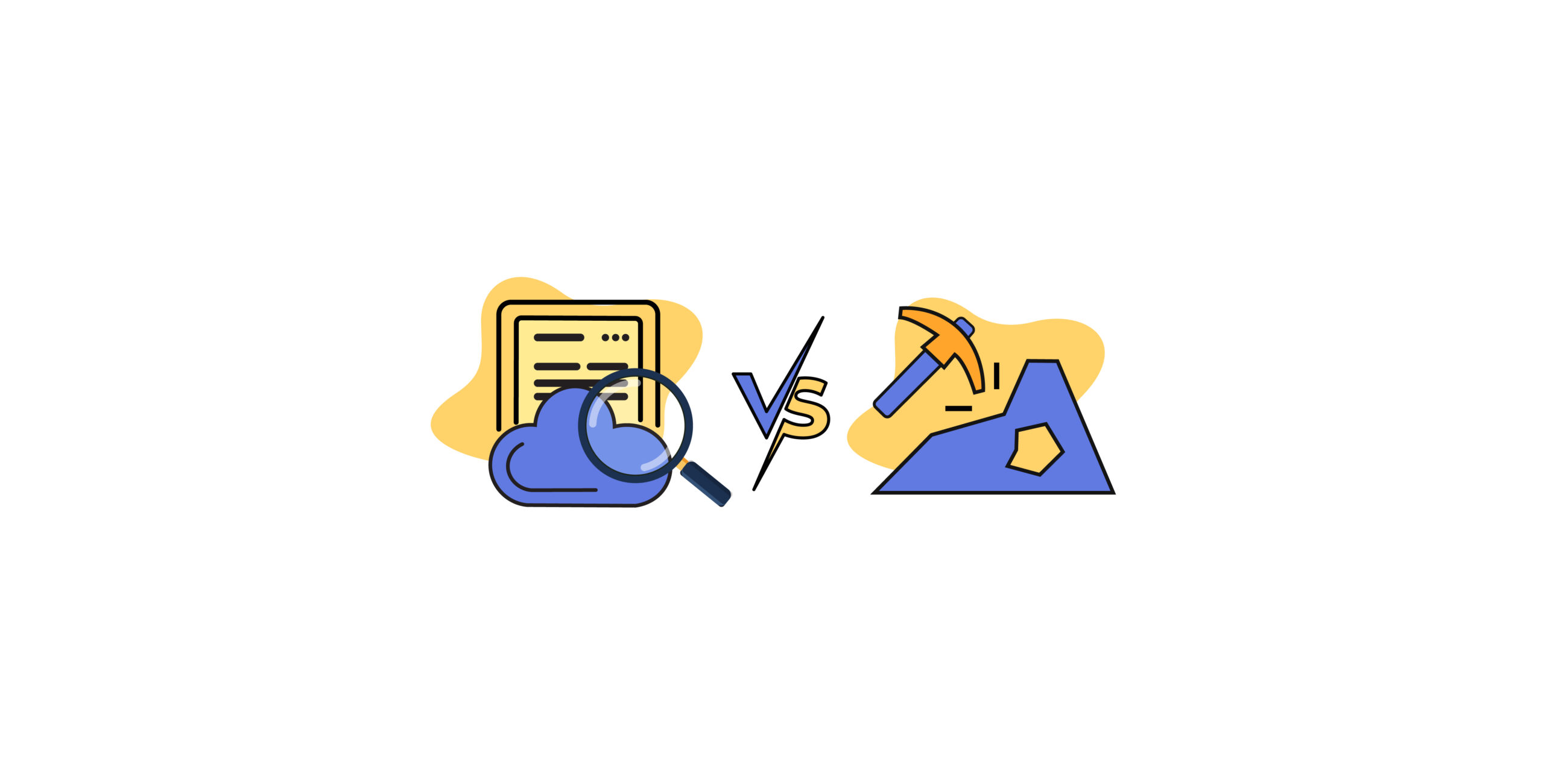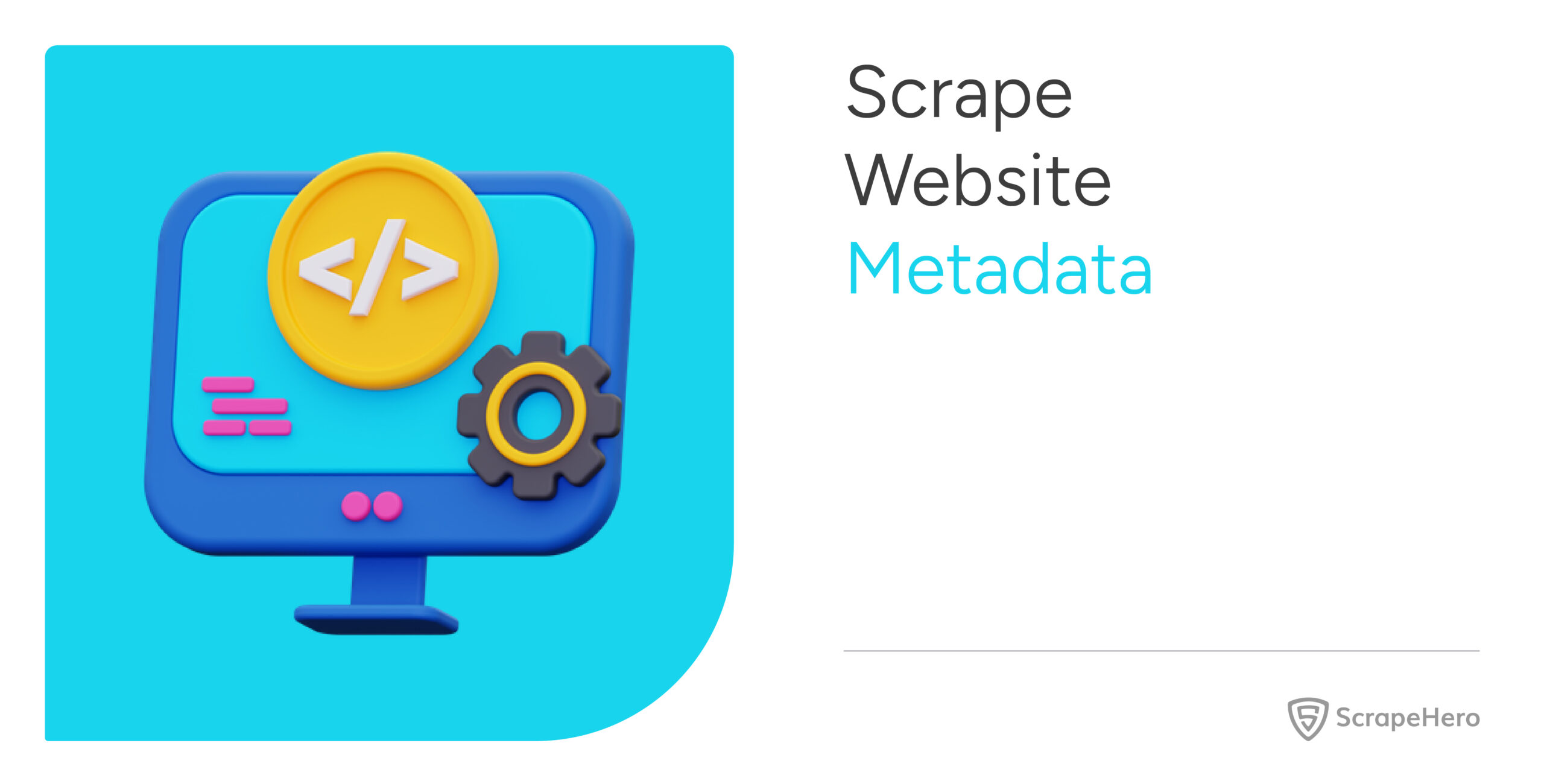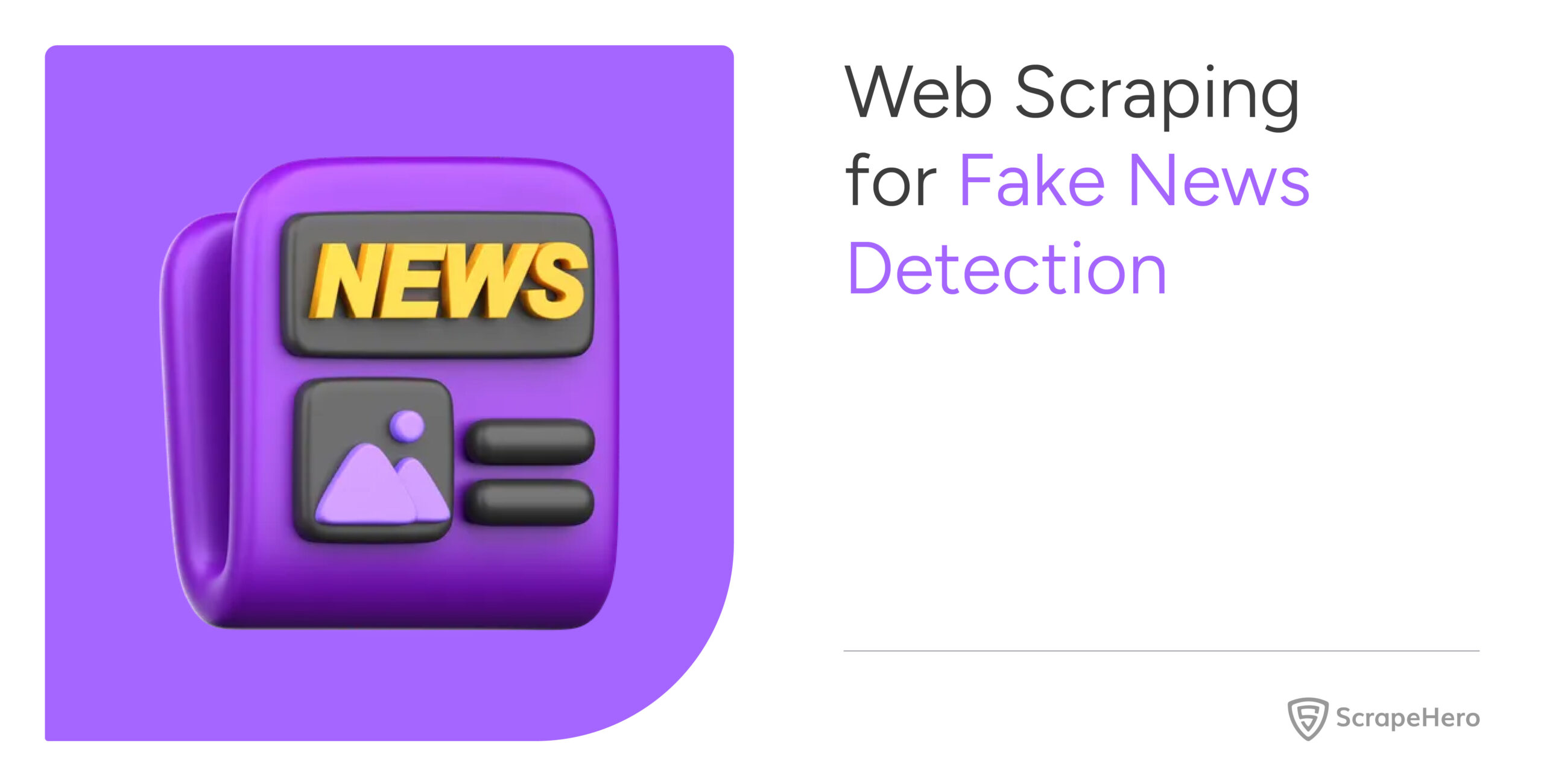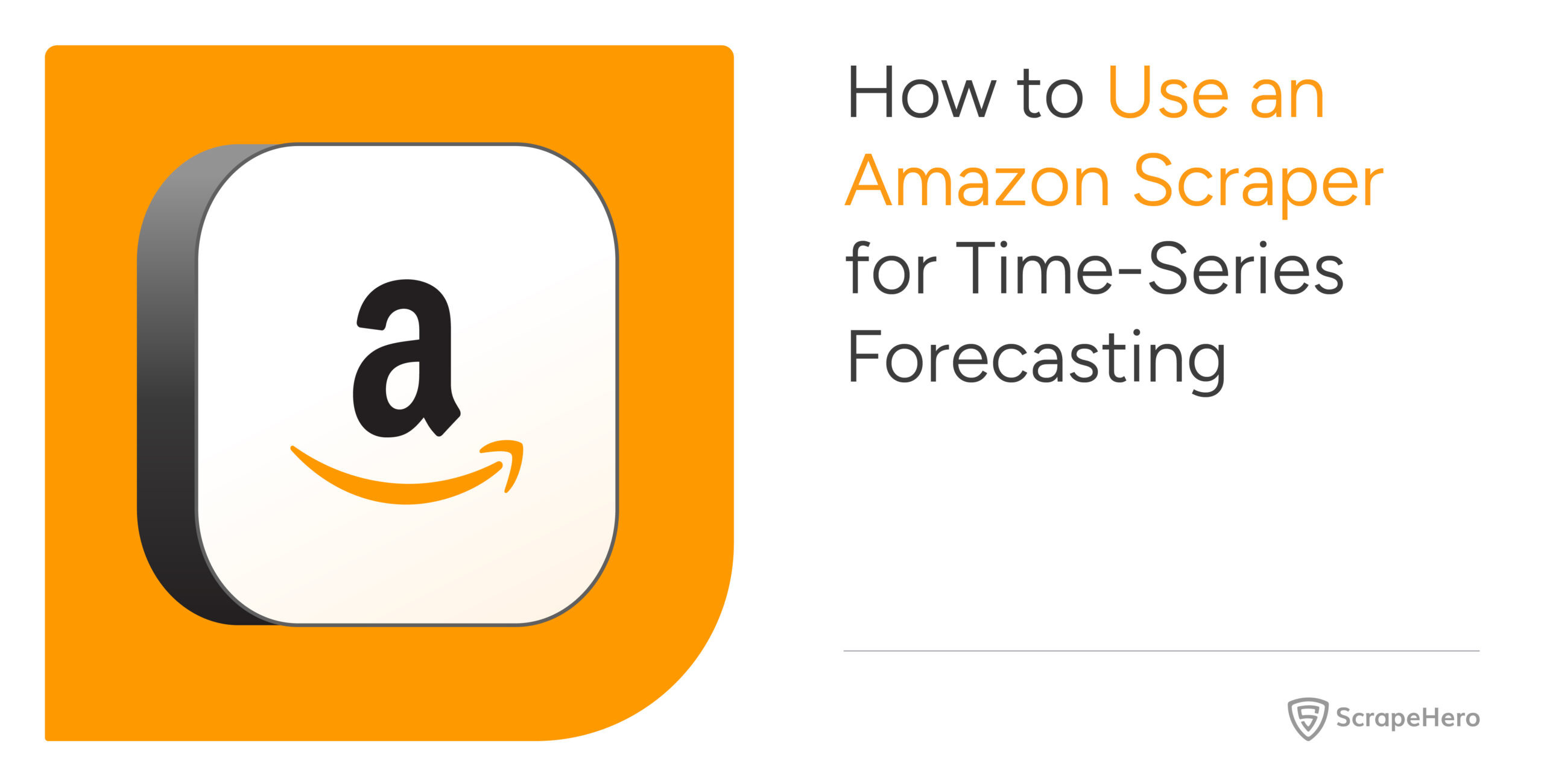Although the words scraping and mining may sound similar, their purpose, processes, and techniques differ significantly. This article explores the differences between web scraping vs. data mining.
Let’s start with web scraping.
Web Scraping
Web scraping refers to extracting information automatically. To do so, you use a computer program. But writing a program is just one step.
Steps of Web Scraping
The basic steps for web scraping involve
- Determining the target website
- Deciding on the data to extract
- Analyzing the HTML source code
- Creating a computer program
- Executing the script
Let’s look at these steps in detail:
Determining the Target Website
The tools you use for scraping depend on the target website. If the target website is dynamic, you need to perform web scraping with Playwright or other headless browsers. For static sites, you can use HTTP requests to fetch the HTML source code.
Then, you can decide what to extract.
Deciding the Data to Extract
Deciding what to extract also tells you how to extract. That’s because web scraping tools also depend on the data they extract. Some data points may only be available after executing JavaScript, requiring automated browsers. For others, you can use request-based methods.
Deciding the data to extract also tells you which HTML page of the website to analyze.
Analyzing the HTML Source Code
After deciding the data to extract, you must learn how to extract it, which requires you to analyze HTML source code. The source code will tell you which HTML elements hold the required data and what their attributes are.
Then, write the program to target those elements and attributes.
Creating a Computer Program
You can create a program for web scraping in any programming language. But specific programming languages are better suited. For example, Python has a large selection of web scraping libraries.
Python’s simple syntax also supports rapid development, making it easier to debug errors during execution.
Here is a list of Python libraries for data extraction to help you write a computer program.
Executing the Program
The final step is to execute the program. You need appropriate hardware to execute the script. For example, large-scale projects require higher RAM and storage than personal ones. Therefore, the hardware depends on the specific use case.
If you want to learn more about web scraping, check this tutorial: What is Web Scraping?
Use Cases
Web scraping has several use cases; to be precise, wherever you need data, you can use web scraping. For example, you can use web scraping to get data in these areas:
- Machine learning
- Market research
- Competitor research
- Data aggregation
- Lead generation
- Academic research
All these use cases require a large amount of data.
Machine Learning
You need a considerable amount of training data for machine learning. The data type depends on the model. For example, a large language model needs text content, like news and blogs, from the internet.
Market Research
Market research involves understanding demand and competitors to identify market opportunities. This data is readily available on the internet in the form of customer reviews, business websites, forums, etc, which you can scrape.
Competitor Research
Competitor research refers to understanding your competitor’s business. This means monitoring data like competitor prices and products, which you can do by periodic web scraping.
Data Aggregation
Web scraping helps you gather data from multiple sources, like websites and social media, and aggregate them into a single place. This aggregated data facilitates faster analysis.
Lead Generation
You can use web scraping for lead generation. For example, you can scrape official websites for contact information to generate B2B leads. You can also scrape social media to find individuals interested in your products.
Academic Research
Web scraping can help academic researchers in two ways. You can scrape the internet to collect data for research purposes, and you can scrape academic papers relevant to your topic for literature review.
For more use cases, check out the ScrapeHero services page.
Techniques
Popular web scraping techniques include
- Off-the-shelf web scraping tools
- Fetching and Parsing HTML
- Web Scraping APIs
Using Ready-Made Web Scrapers
Ready-made tools for web scraping exist. These tools let you gather data within a few clicks. For example, ScrapeHero Cloud has several ready-made web scrapers you can try for free.
Fetching and Parsing HTML
This approach can be economical but requires technical knowledge. Various Python frameworks and libraries exist to facilitate fetching and parsing HTML yourself:
- HTTP requests and Parsing libraries like Python requests, BeautifulSoup, and lxml
- Automated browsers like Selenium and Playwright
To know all about Python web scraping frameworks and libraries, check this tutorial on Python Web Scraping Frameworks
Using web scraping APIs
The APIs are the middle ground. They do require coding, but not as much as if you were to create a web scraper from scratch. And they are easier to integrate into your workflow than off-the-shelf web scraping tools.
An example would be web scraping APIs on ScrapeHero cloud. These APIs let you integrate ready-made scrapers into your workflow.
Data Mining
Data mining involves analyzing raw data to derive business insights. It uses various analytical methods, including machine learning.
Steps of Data Mining
Its steps include:
- Data Cleaning
- Exploratory Data Analysis
- Modeling
- Evaluating
- Interpreting
Data Cleaning
Data may be inconsistent and have typos. This step improves the quality of analysis by fixing duplicates, inconsistencies, errors, and missing values.
Exploratory Data Analysis
Exploratory data analysis understands the nature of data. It uses techniques like descriptive data analysis and visualization to summarize data and find trends. This step also tries to find relationships between variables.
Modeling
This step develops and trains models for analysis. It involves choosing an algorithm and training it using one set of data. Then, it tests the model using another set of data.
Evaluating
This step evaluates the analysis results using various techniques. Evaluation in data mining involves determining performance metrics and validating the results. It also checks whether the analysis is useful.
Use Case
Data mining finds uses in various industries:
- Faster Diagnosis in Health Care
- Predictive Maintenance in Manufacturing
- Fraud Detection in Finance
- Improved Teaching Strategies in Education
- Enhanced Customer Acquisition in Marketing
Faster Diagnosis in Health Care
Hospitals already have patient data. They can use data mining techniques to analyze it and reveal patterns and anomalies. This will enable early diagnosis, reducing fatalities or complications.
Predictive Maintenance in Manufacturing
The manufacturing industry can use data mining techniques to analyze equipment performance. They can find patterns showing a reduction in the performance, suggesting potential failure. This enables them to perform maintenance before failure.
Fraud Detection in Finance
Data mining allows banks to detect fraudulent transactions. They can use data mining to analyze customer transaction patterns to find anomalies that may suggest fraud.
Improved Teaching Strategies in Education
Educational institutions can improve their teaching strategies by analyzing the data gathered while teaching. They can also analyze individual student performances and provide personalized learning.
Enhanced Customer Acquisition in Marketing
Companies can use data mining to group their potential customers into distinct segments. They can then customize their Marketing campaigns to these segments.
Customizing the campaigns to various segments allows companies to deliver more relevant messages to potential customers, increasing the chances of their acquisition.
Techniques
Popular data mining techniques include
- Clustering
- Classification
- Regression
- Text Mining
Clustering
A data set contains several objects; some of them would be more similar than others. Clustering groups those similar objects. You calculate the similarity by finding a numerical value corresponding to a feature, such as the distance between the data points.
For example, you can use clustering to group customers with similar purchasing behavior.
Classification
Classification is a supervised learning technique in which you train the AI/ML model using a set of data. Here, you classify the data points using a set of predefined labels.
An example would be a task to find whether a customer will purchase a product. This has two predefined labels: yes and no.
Regression
While classification classifies the input data to one of the labels, regression determines a value based on the inputs. The output values are continuous.
For example, predicting an employee’s salary based on experience is regression. Here, the task is regression because the salary is a continuous variable.
Text Mining
Text mining involves analyzing raw text and deriving meaning. It can be used to retrieve information, analyze sentiment, and more.
An example of text mining is understanding reviews and finding whether they are positive or negative.
Web Scraping and Data Mining: Differences
Here is a table showing the difference between web scraping vs. data mining.
|
Web Scraping |
Data Mining |
|
| Purpose | Data Extraction | Data Analysis |
| Techniques | Ready Made Scrapers, Web Scraping APIs, Fetching and Parsing HTML | Clustering, Text Mining, Classification, Regression |
| Use Cases | Gathering data for machine learning, marketing campaigns, academic research, lead generation, etc. | Predictive maintenance, fraud detection, patient diagnosis, personalized teaching, etc. |
Why Scrape Yourself? Use ScrapeHero’s Web Scraping Service?
Hopefully, this tutorial has cleared your doubts about web scraping vs. data mining.
To summarize, web scraping only refers to extracting data from the internet; it does not care about analysis. Data mining only refers to analyzing raw data sets; it works on already extracted data.
Because of the differences, knowledge of one does not translate to another, and you need to understand both separately. That means it can be challenging to perform both data mining and web scraping yourself. This is where ScrapeHero comes in.
ScrapeHero’s web scraping service can build high-quality web scrapers and crawlers for you according to your specifications. Just give us your data requirements, and we will deliver the data, leaving you to focus only on mining.
We can help with your data or automation needs
Turn the Internet into meaningful, structured and usable data








